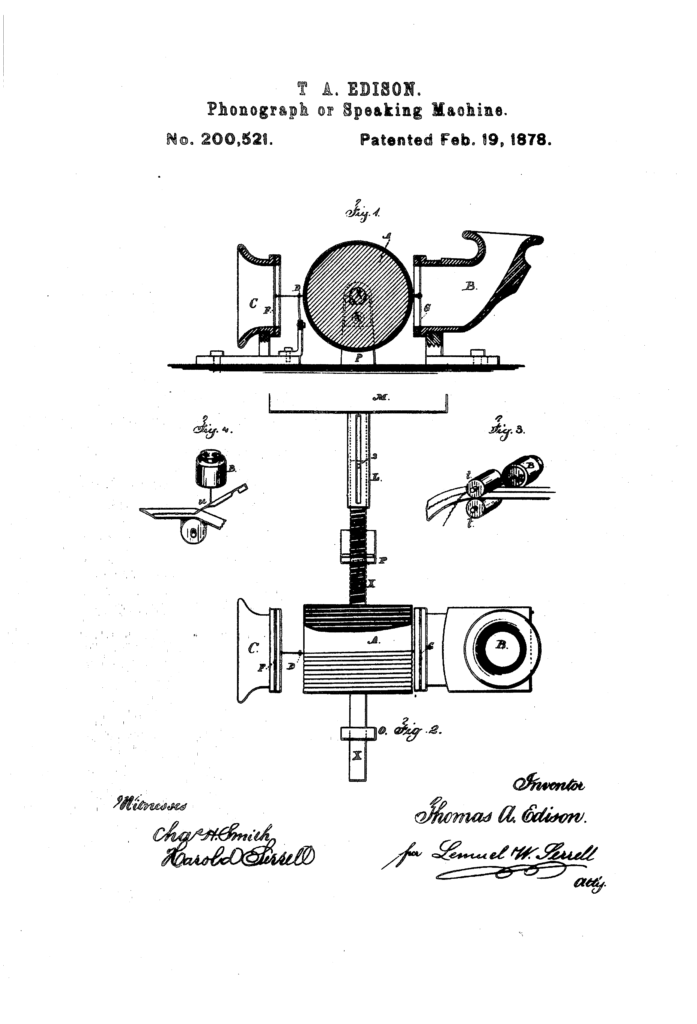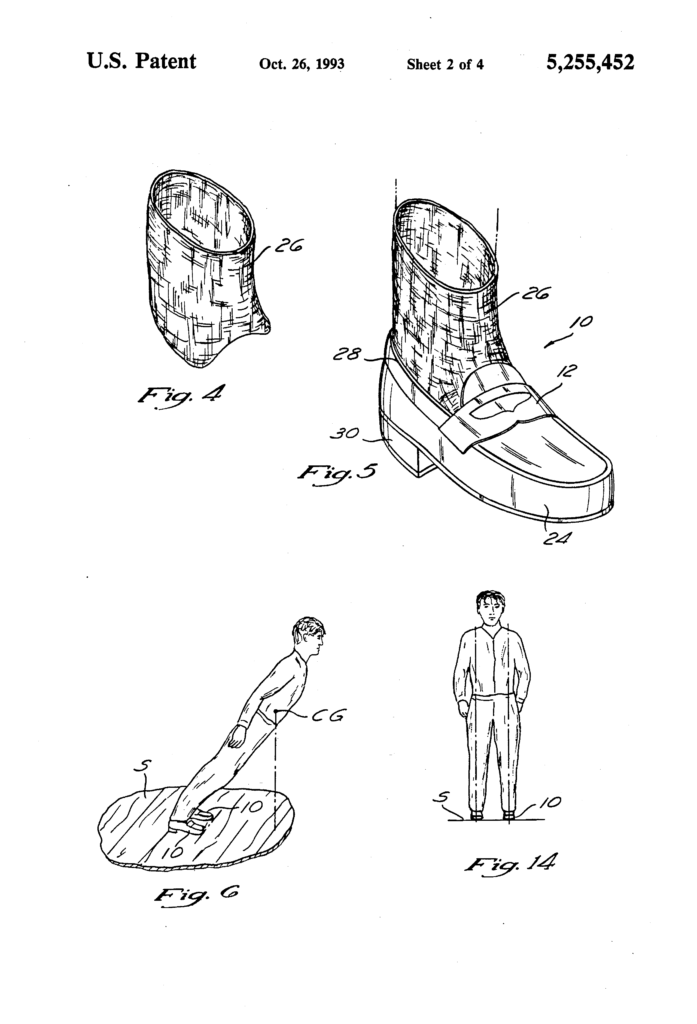When we think of music, we think of melodies, lyrics, rhythms, and genres that define eras and shape culture. From Britpop and Post-Punk to Drum and Bass and Grime, musical expression has continually evolved over previous centuries. But behind the sound lies a parallel story of innovation: the development of the tools and technologies that shape how music comes to life and reaches its audience.
The crescendo of musical patents
From synthesizers to streaming platforms, technological breakthroughs have revolutionised the music landscape. At the heart of this transformation is intellectual property, as patents protect the innovations that drive the music industry forward. What began with relatively simple mechanical inventions has grown into a diverse and rapidly expanding field, reflecting the pace of technological progress in how music is composed, performed, recorded, shared and experienced.
In this article, Associate Clare Pratt highlights a selection of intriguing and pioneering music patents which illustrate the breadth of innovation within the industry.
Instrumental Inventions
In the 19th century, as renowned composers penned melodies still celebrated today, inventors were crafting the instruments that would become fundamental to creating music. Among them was Belgian instrument maker Adolphe Sax. In 1846, he patented a woodwind instrument with a tapered barrel that combined the projection of brass with the agility of woodwinds. He called it the saxophone.

A few decades later, Thomas Edison created the first device capable of recording and reproducing sound, named the phonograph. This enabled music to move from live performance into private spaces, to be enjoyed wherever and whenever. The American inventor patented the phonograph in 1878. Seeking improvements to the phonograph and the graphophone, which Chichester A. Bell and Charles S. Tainter developed, Emile Berliner introduced the flat disc format. In 1887, he patented the gramophone which offered a more practical alternative.
Technological breakthroughs continued into the 20th century. A key moment came in 1932 with the granting of U.S. Patent No. 1,885,001 to H.F. Olson for an “apparatus for converting sound vibrations into electric variations.” This patent marked a pivotal step in the development of the modern microphone.
Together in Electric Dreams
Although experiments with electrically powered instruments date back to the 18th century, it was the widespread adoption of electronics in the late 1900s that truly redefined music. Innovations such as electric guitars and synthesizers fuelled the emergence of entirely new genres, such as rock, disco, and techno, while amplified sound systems allowed musicians to perform in front of huge crowds.
One of the earliest and most influential patents came in 1937, when George Beauchamp secured protection for an “electrical stringed musical instrument”, the first commercially marketed electric guitar. This paved the way for the modern electric guitar. Another pioneer in electric guitars was Ted McCarty, who, as president of Gibson, played a pivotal role in advancing electric guitar design. He oversaw the development of Gibson’s first solid-body models and patented innovations like the “Tune-O-Matic” bridge in 1956, which became a standard feature on Gibson models, and one of his unique guitar designs in 1958.
In addition, some of the most creative contributions to music technology have come from artists themselves. Guitar legend Eddie Van Halen received a patent in 1987 for a body-mounted support that allowed him to play his guitar face-up, “to create new techniques and sounds previously unknown to any player.” Similarly, Michael Jackson left his mark not only on pop music but on stagecraft. In 1993, the US Patent and Trademark Office awarded him patent for a shoe with a heel mechanism that latched onto stage pegs. The invention allowed him to lean ‘impossibly’ far forward in his iconic Smooth Criminal move, aptly titled the “Method and means for creating anti-gravity illusion.”

The Digital Turn of the Century
The late 20th and early 21st centuries ushered in a further wave of digital innovations that reshaped how music is made and experienced.
One of the most transformative (and controversial) developments was Auto-Tune. Created by geophysical engineer Andy Hildebrand, Auto-Tune applied techniques used in seismic data analysis to audio processing, enabling automatic pitch correction in real-time vocal and instrumental performances. Hildebrand’s software is protected by U.S. Patents No. 5,727,074 (“Method and apparatus for digital filtering of audio signals”, issued in 1998) and No. 5,973,252 (“Pitch detection and intonation correction apparatus and method,” issued in 1999). While initially conceived as a subtle corrective tool, Auto-Tune became a defining effect in its own right, famously debuting in Cher’s 1998 hit Believe and later revolutionising pop, hip-hop and beyond.
Transforming how we identify music, Shazam, an audio-processor app, was developed in the early 2000s. The app can recognise songs within seconds, even in noisy environments, by comparing audio fingerprints, based on time-frequency peaks, against a vast database. Developer Avery Li-Chun Wang secured patents for the underlying technology, including a “system and methods for recognising sound and music signals in high noise and distortion” and a “method and system for content sampling and identification.”
The Future of Patents in Music
Looking ahead, the intersection of music and technology shows no signs of slowing. Emerging trends are already shaping the next frontier of musical innovation—and intellectual property will continue to play a central role in protecting and enabling this progress.
- AI is increasingly being used for musical composition, mastering and even creating virtual artists. Future patents could focus on advanced AI models that can generate complex, nuanced and stylistically coherent music. Our previous article on AI and music covers the concerns for intellectual property protection which arise with machine learning models.
- Blockchain technology offers a transparent and secure method for tracking music ownership and royalties, whilst NFTs allow artists to create, authenticate, and monetise unique digital assets.
- Virtual Reality and Augmented Reality technologies are redefining live experiences by creating immersive virtual concerts and interactive performances that blend the digital and physical worlds.
As music continues to evolve alongside technology, patents will remain crucial in protecting and encouraging the creative ingenuity that pushes the industry forward. From the early inventions of the 19th century to the digital breakthroughs of the 21st, each innovation has reshaped how we create, share, and experience music. With the rapid rise of AI, blockchain, and immersive technologies, the next era of music promises even more exciting opportunities, as well as presenting significant challenges for inventors, artists and intellectual property law.

